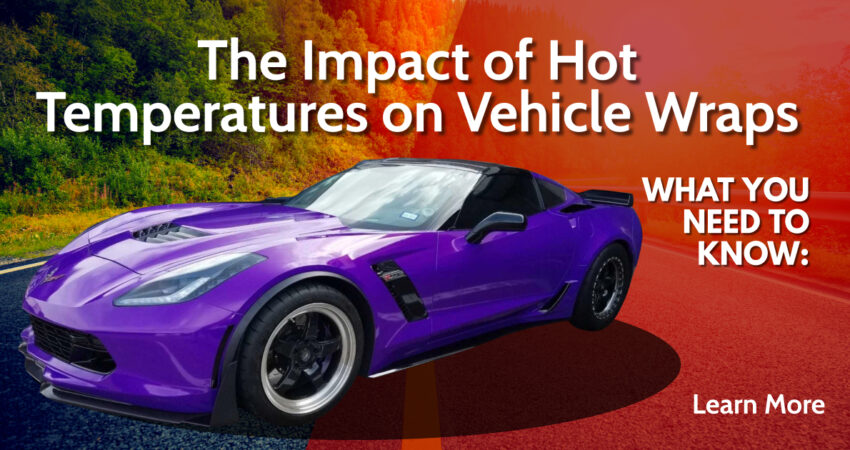Vehicle wraps have become a popular way to add a personalized touch to cars, trucks, and even entire fleets. These wraps offer a range of benefits, from advertising to protection against minor scratches and UV rays. However, like any other material exposed to the elements, vehicle wraps can be influenced by environmental conditions, particularly high temperatures. In this article, we’ll explore the effects of hot temperatures on vehicle wraps and discuss how to ensure their longevity and appearance.
Understanding Vinyl Wrap Composition
Before delving into the effects of hot temperatures, it’s essential to understand the composition of vehicle wraps. Most wraps are made from vinyl, a durable and flexible material that can adhere to various surfaces. Vinyl wraps typically consist of multiple layers, including a printed graphic layer, a protective laminate layer, and an adhesive backing layer.
Effects of Hot Temperatures on Vehicle Wraps
1. Adhesive Performance: High temperatures can affect the adhesive properties of vinyl wraps. Excessive heat can cause the adhesive to become softer, potentially leading to adhesion issues. If the adhesive becomes too soft, the wrap might not adhere properly to the vehicle’s surface, resulting in wrinkles, bubbles, or even peeling. This is particularly concerning for areas with complex curves and contours.
2. Material Expansion: Vinyl is sensitive to temperature changes, expanding in hot weather and contracting in cold weather. In extremely hot conditions, vinyl wraps can expand, leading to distortion or warping of the graphics and the overall appearance. While modern vinyl wraps are designed to handle these fluctuations, prolonged exposure to extreme heat can still impact their integrity.
3. Color Fading and Degradation: Hot temperatures, especially when combined with intense sunlight, can accelerate color fading and material degradation. UV rays can break down the pigments in the printed graphic layer, causing colors to fade and lose their vibrancy over time. This can be particularly noticeable on dark-colored wraps.
4. Laminate Integrity: The protective laminate layer on a vehicle wrap is designed to shield the printed graphics from environmental factors, including UV radiation. However, prolonged exposure to high temperatures can cause the laminate to degrade or peel, compromising its protective capabilities and potentially exposing the graphics to damage.
5. Wrinkles and Bubbles: As mentioned earlier, heat can soften the adhesive on a vehicle wrap. This softening, combined with temperature-related expansion, can lead to the formation of wrinkles and bubbles in the wrap. These imperfections not only impact the aesthetics but also the overall performance of the wrap.
Maintaining Vehicle Wraps in Hot Temperatures
1. Parking Considerations: Whenever possible, park your wrapped vehicle in shaded areas to minimize exposure to direct sunlight and extreme heat. This can significantly reduce the temperature that the wrap is subjected to.
2. Regular Cleaning: Cleaning your vehicle wrap regularly helps remove dirt, debris, and contaminants that can degrade the material over time. Use a gentle, non-abrasive cleaning solution and a soft cloth to avoid scratching or damaging the wrap’s surface.
3. Protective Coatings: Consider applying a protective coating specifically designed for vinyl wraps. These coatings can provide an additional layer of UV protection and enhance the wrap’s resistance to environmental elements.
4. Limiting Exposure: If possible, avoid extended exposure to extreme heat. This might involve parking in covered areas, using car shades, or even planning your routes to minimize exposure during the hottest parts of the day.
While vinyl wraps are designed to withstand a range of environmental conditions, including high temperatures, it’s important to recognize that extreme heat can still have an impact on their performance and appearance. By understanding the potential effects and taking proactive steps to protect your vehicle wrap, you can ensure that it maintains its vibrant look and functional integrity for as long as possible. Regular maintenance, thoughtful parking habits, and the use of protective coatings can all contribute to extending the life of your vehicle wrap in even the hottest climates.
